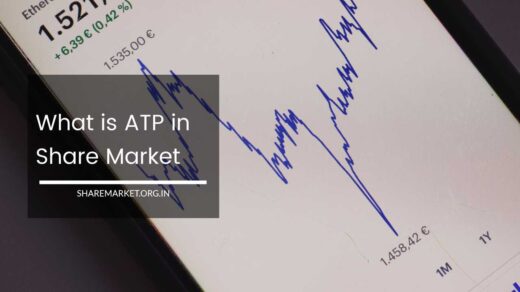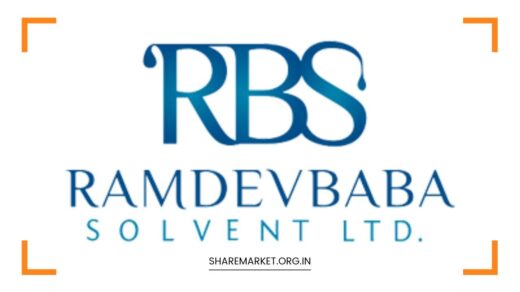What is Put and Call in Share Market

What is Put and Call in Share Market
Call and put options are popular derivative contracts that offer certain rights to the buyer without imposing any obligation to buy or sell the underlying asset at a predetermined date or price.
These options provide investors with a flexible way to manage risk and potentially profit from price movements in various financial markets.
There are two primary types of options: call options and put options. A call option gives the holder the right to buy the underlying asset at a specified price, known as the strike price, within a specific time period.
On the other hand, a put option grants the holder the right to sell the underlying asset at the strike price within the predetermined timeframe.
Within the realm of call and put options, there are further distinctions based on exercise styles. American-style options can be exercised at any time before their expiration, providing greater flexibility to the option holder.
European-style options, on the other hand, can only be exercised on the expiration date itself, limiting the exercise period.
Understanding call and put options is crucial for investors looking to participate in the options market. These derivatives can be utilized to hedge against potential losses or speculate on the price movements of stocks, indices, commodities, or currencies.
By gaining insights into the workings of call and put options, investors can make informed decisions and effectively utilize these instruments to manage risk and potentially enhance their investment strategies.
Call and Put Options for Beginners
| Underlying Asset’s Price | What is to Be Done? |
|---|---|
| Probability of increasing | BUY call option or SELL put option |
| Probability of decreasing | BUY put option or SELL call option |
Types of Option Contracts
Option contracts can be categorized into two main types based on their exercise styles:
1. US Option Contracts: US options, also known as American-style options, provide the holder with the right to exercise the option at any time before the expiration date.
This flexibility allows investors to take advantage of favorable market conditions or adjust their positions based on changing circumstances.
Whether it is a call option or a put option, holders of US options have the freedom to exercise their rights throughout the life of the contract.
2. European Option Contracts: European options, as the name suggests, follow the exercise style of European-style options.
These options can only be exercised on the expiration date itself. The holder does not have the ability to exercise the option prior to the predetermined expiration date.
This exercise restriction may limit the flexibility of investors but can also simplify the decision-making process by removing the need for constant monitoring and timely execution.
It is important to note that most of the traded call and put options examples belong to the US option contracts.
In the US options market, investors have the convenience of squaring off their positions by buying or selling the same option anytime before the expiration date.
This ability to close out positions early provides traders with the flexibility to manage risk and capture profits based on their trading strategies and market outlook.
What is a Call Option?
A call option is a derivative contract that grants the buyer the right, but not the obligation, to purchase a specific underlying asset, such as a stock, at a predetermined price, known as the strike price. Call options have an expiration date, after which they become invalid.
Call options are commonly traded on various types of financial securities, including stocks, currencies, exchange-traded funds (ETFs), and swaps.
While some institutions deal with complex options strategies, individual investors can participate in call option trading as well.
When an investor purchases a call option, they acquire the right to buy the underlying asset at the strike price within a specified time period. However, it’s important to note that owning a call option does not obligate the buyer to exercise their right and purchase the underlying asset.
The buyer has the discretion to decide whether or not to exercise the option based on their assessment of the market conditions and the potential for profit.
Call options provide investors with several advantages. Firstly, they offer the opportunity to benefit from potential price increases in the underlying asset.
If the market price of the asset exceeds the strike price before the option’s expiration, the buyer can exercise the option and buy the asset at a lower price. Secondly, call options allow investors to participate in the market and potentially generate profits with a lower upfront investment compared to buying the asset outright.
However, it’s important to recognize that call options also carry risks. If the market price of the underlying asset does not exceed the strike price before the option expires, the buyer may choose not to exercise the option, resulting in a loss of the premium paid to acquire the option.
How Do Call Options Work?
A call option works through a contract established on a securities exchange, where an option seller (also known as the writer) engages with an option buyer.
The seller grants the buyer the right, but not the obligation, to purchase a specific security at a predetermined price, known as the strike price. Importantly, there is no obligation associated with exercising this right.
In the case of equity call options, each contract typically represents 100 shares. This means that the buyer of the call option has the ability to exercise the option and purchase 100 shares of the underlying stock at the specified strike price.
The buyer of the call option contract is required to pay a price called the option premium to the seller or writer of the option contract. This premium compensates the seller for granting the buyer the right to purchase the security.
It is important to understand that the market value of options is determined by buyers and sellers in the market. Options are considered derivatives since their value is derived from the underlying security.
If the price of the underlying security exceeds the strike price stated in the contract, the call option will have value at the time of expiration.
This is because the option holder can exercise the option and purchase the stock at a lower price than the current market value.
At expiration, the intrinsic value of a call option represents a benefit to the buyer and a cost to the seller. It is important to note that call options can be offset by other call options, meaning that options traders often engage in transactions to close out their positions before expiration.
Understanding how call options work involves grasping concepts such as strike price, option premium, intrinsic value, and the discretionary nature of exercising the option.
It is recommended to conduct thorough research, consult financial professionals, and gain familiarity with the specific terms and conditions of call options before engaging in options trading.
Call Option Example
Let’s take a closer look at an example of buying a call option to further understand its mechanics:
Assume that the stock price of Reliance India is currently trading at Rs. 100 per share. Investor B owns 100 shares of Reliance India and is looking to generate additional income beyond the dividends received. Based on their analysis, B believes that the stock price will not exceed Rs. 120 in the next month.
After assessing the available call options, B finds a call option with a strike price of Rs. 120 trading at a premium of 40p per contract. B decides to sell one call option, representing 100 shares, and receives a premium of Rs. 40 (40p X 100 shares).
Now, let’s consider the potential outcomes:
1. If the stock price rises above Rs. 120: In this scenario, the buyer of the call option has the right to exercise it. B, as the seller, would be obligated to deliver the 100 shares of Reliance India at the strike price of Rs. 120 per share. B would receive the strike price for the shares and any profit beyond the strike price would be forgone.
2. If the stock price does not exceed Rs. 120: If the stock price remains below Rs. 120, the buyer of the call option is unlikely to exercise their right. In this case, B would retain ownership of the 100 shares and would not have to sell them. B would keep the premium received from selling the call option, which provides additional income.
It’s important to note that this example demonstrates the perspective of the seller of the call option (B) and their potential obligations.
Buyers of call options have the right to exercise their options if it is beneficial to them, but they are not obligated to do so.
Additionally, the example assumes a simplified scenario and does not consider factors such as transaction costs and market volatility, which can impact the profitability of options trading.
What is a Put Option?
A put option is a contract that grants the buyer the right, but not the obligation, to sell the underlying asset at a specified strike price within a certain period.
The put option provides downside protection to the buyer and allows them to profit from a decline in the price of the underlying asset.
When a put option is purchased, the buyer believes that the price of the underlying asset will decrease. They anticipate that the value of the put option will increase as the underlying asset’s price goes down.
The buyer of a put option pays a premium to the seller for the right to sell the asset at the specified strike price.
On the other hand, the seller of a put option, also known as the writer, has the obligation to buy the underlying asset from the buyer if the buyer decides to exercise their option.
The seller receives the premium from the buyer but assumes the risk of potentially buying the asset at a higher price if the market price falls below the strike price.
Investors often purchase put options as a form of insurance to protect against potential losses in their investment portfolio. By buying put options, they can limit their downside risk and potentially profit from market downturns.
Alternatively, some investors may sell put options if they are willing to buy the underlying asset at the specified strike price and receive the premium from the buyer.
It’s important to note that the value of a put option is influenced by factors such as the price of the underlying asset, the strike price, the time to expiration, and market volatility. Proper analysis and understanding of these factors are crucial for investors considering trading put options.
How Do Put Options Work?
Closing out or completing an options trade can be done in various ways depending on the specific circumstances. When a put option expires profitably, there is a possibility that the option will be exercised.
However, if the option expires unprofitable, the money paid for the option is essentially lost, and no further action is taken.
The value of a put option has the potential to increase significantly. As the price of the underlying stock decreases, the premium of a put option tends to rise. Conversely, when the premium of a put option declines, it indicates a considerable increase in the stock price.
Put options provide investors with the opportunity to sell the underlying stock when the option is exercised. Therefore, a put option is commonly used as a means of protection against downward movements in a long stock position.
While put options can be used for speculative purposes or as a hedging strategy, their basic functionality operates in a slightly different manner. In essence, the value of a put option intentionally increases as the value of the underlying stock decreases, and vice versa.
When an investor buys a put option, they are essentially betting that the value of the underlying stock will decrease. Conversely, when an investor sells a put option, they are placing a bet that the value of the underlying stock will increase.
Example of Put Option
Let’s say Investor A purchases one put option on Adani Enterprises with a strike price of Rs. 100. Each option contract represents 100 shares, so Investor A has the right to sell 100 shares of Adani Enterprises at Rs. 100 per share. It’s important to note that this right remains valid until the expiration date of the option.
If Investor A already holds 100 shares of Adani Enterprises, and the stock price drops below Rs. 100, Investor A’s broker will execute the put option by selling these shares at the strike price of Rs. 100.
In this case, the option writer (the seller of the put option) will be obligated to purchase the shares from Investor A at the agreed-upon price.
This example illustrates how a put option can provide protection or profit potential for an investor who anticipates a decline in the stock price.
By exercising the put option, the investor can sell the stock at the strike price, thereby limiting their potential losses or benefiting from a downward move in the stock.
Basic Terms Relating to Call and Put Options
1. Spot Price: The spot price refers to the current market price of the underlying asset, such as a stock, at any given moment. It represents the price at which the asset can be bought or sold immediately.
2. Strike Price: The strike price, also known as the exercise price, is the predetermined price at which the buyer and seller agree to buy or sell the underlying asset when the option is exercised.
It is the price at which the option holder can buy (in the case of a call option) or sell (in the case of a put option) the asset.
3. Option Premium: The option premium is the price paid by the option buyer to the option seller for the rights provided by the option contract. It is the upfront payment made by the buyer and represents the cost of acquiring the option.
The premium is influenced by factors such as the current price of the underlying asset, volatility, time to expiration, and market conditions.
4. Option Expiry: Options contracts have a specific expiration date, which is the last day on which the option can be exercised.
In India, options contracts typically expire on the last Thursday of the month. After the expiry date, the option becomes worthless and loses its value.
5. Settlement: In options trading, settlement refers to the process of fulfilling the contractual obligations of the options contract.
In India, options contracts are settled in cash, which means that the difference between the spot price and the strike price is settled in cash rather than through the physical delivery of the underlying asset.
Understanding these basic terms is crucial for navigating the world of options trading and effectively participating in call and put option transactions. It’s important to further explore and grasp the intricacies of options trading, including risk management strategies and market analysis techniques, before engaging in actual trading activities.
Difference Between Call Option and Put Option
1. Call Option: A call option gives the buyer the right, but not the obligation, to buy the underlying asset at a predetermined price (strike price) within a specified period of time.
Call options are typically purchased when there is an anticipation of the price of the underlying asset to rise. The buyer of a call option benefits from a price increase in the underlying asset because they can buy it at a lower predetermined price.
The buyer pays a premium to acquire the call option, and if the price of the underlying asset exceeds the strike price, the call option becomes profitable.
The buyer can then exercise the option by buying the asset at the strike price and either sell it for a profit or hold onto it.
2. Put Option: A put option, on the other hand, provides the buyer with the right, but not the obligation, to sell the underlying asset at a predetermined price (strike price) within a specified period of time.
Put options are typically purchased when there is an anticipation of the price of the underlying asset to fall. The buyer of a put option benefits from a price decrease in the underlying asset because they can sell it at a higher predetermined price.
Similar to a call option, the buyer pays a premium to acquire the put option. If the price of the underlying asset drops below the strike price, the put option gains intrinsic value.
The buyer can then sell the put option for a profit or exercise it by selling the asset at the strike price.
In both call and put options, the buyer has the right, but not the obligation, to exercise the option. They can choose to let the option expire if it is not profitable or sell the option in the market to close the position before expiration.
It’s important for options traders to analyze market conditions, assess the potential movement of the underlying asset, and consider various risk management strategies when trading call and put options.
Here’s a table explaining the differences between call options and put options:
| Call Option | Put Option |
|---|---|
| A call option gives the buyer the right to buy an underlying asset at a pre-determined strike price on a specific date, without any obligation to do so. | A put option gives the buyer the right to sell an underlying asset at a pre-determined strike price on a specific date, without any obligation to do so. |
| Call options are typically used when investors anticipate an increase in the price of the underlying asset. | Put options are typically used when investors anticipate a fall in the price of the underlying asset. |
| The potential profit from a call option is unrestricted, as there is no ceiling to how much the price of the underlying asset can rise. | The potential profit from a put option is limited, as the price decreases will eventually be arrested at zero. |
| If the price of the underlying asset rises above the strike price, the call option can be exercised for a profit. | If the price of the underlying asset falls below the strike price, the put option can be exercised for a profit. |
| Investors who buy call options pay a premium upfront for the right to buy the underlying asset. | Investors who buy put options pay a premium upfront for the right to sell the underlying asset. |
| Call options provide the opportunity to participate in the potential upside of the market. | Put options provide a means to hedge against potential downside risks. |
Please note that the information provided is a general overview, and trading options involves various factors and complexities that should be considered.

















